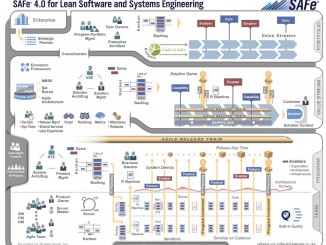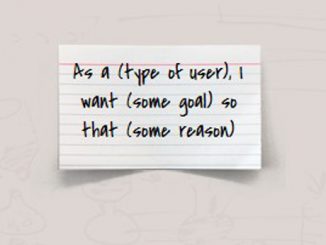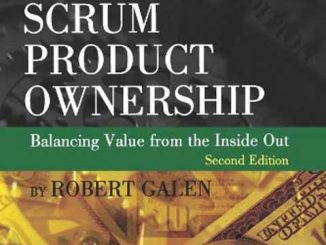Articles, Blog Posts, Books and Quotes on Agile Project Management
Developing large software systems automatically generate some technical dependency issues. If this is often managed by software architects in traditional projects, how do you communicate this technical dependencies when you are organized using an Agile approach? This is the topic discussed in the paper written by a Swedish research group.
The Scaled Agile Framework (SAFe) is one of the best know approach for scaling Agile practices. In a recent article, Al Shalloway proposes his own assessment of this framework, explaining which parts are good and which parts could be counter-productive or difficult to implement.
We all know the “Definition of Done” used in Scrum for items that should be potentially shippable to the customer at the end of the sprint. In his book Essential Scrum, Kenneth Rubin discusses the “Definition of Ready” that applies to product backlog items that should be ready to be developed before the start of the sprint.
Technical Debt is defined as the eventual consequences of poor or evolving software architecture and software development within a codebase. In a blog post published for the Software Engineering Institute (SEI), Robert Nord has provided the keys points discussed in a seminar Managing Technical Debt in Software Engineering, an event that discussed both the past and the future of managing technical debt.
If the retrospectives are one of the main improvement tools for Agile teams, they can also be the subjects of improvement. In this article, Tom Monico explains how his team has adopted the starfish model to create a better retrospectives process where feedback is produced in real-time and not only at the end of a Scrum sprint.
In an ideal Agile world, the Scrum team can complete all user stories tasks that it planned for the current sprint. The real world is however different. In this article, Scott Lively explains how to use the sprint data to modify the team behavior.
“Garbage in, garbage out” is an old programming concept that is today somewhat similar to the “Building the right product versus building the product right” mantra. In Agile project management approaches like Scrum, the role of the product owner is fundamental to deliver value to the customer. Scrum. The Product Ownership book written by Robert Galen is completely dedicated to this crucial role and aims at presenting approaches, behaviors and attitudes of great product owners.






